The Design Process
This week was our first group project, and we needed to assemble and build a modular cardboard machine that did...something. Our group decided to build a silly hot glue gun 3D printer. I started off by working with the laser cutter to cut out all the cardboard stages. The design can be easily printed on tri-fold science display cardboard, and there was no issues with cutting and scoring.
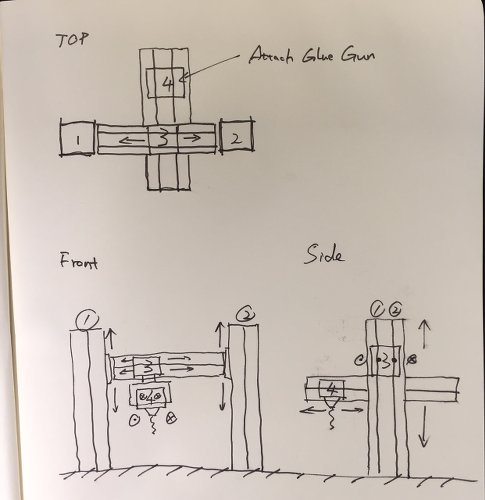
Here is the sketch that Qicheng drew for our group
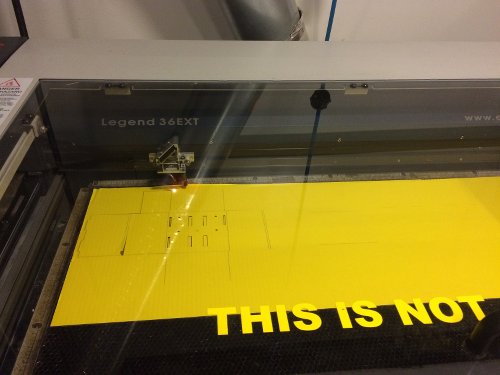
Preparing to laser cut cardboard stages
Meanwhile, other group members worked on making the PCB, soldering, and assembling the cardboard pieces. Isn't group work great sometimes? We were all quite busy!
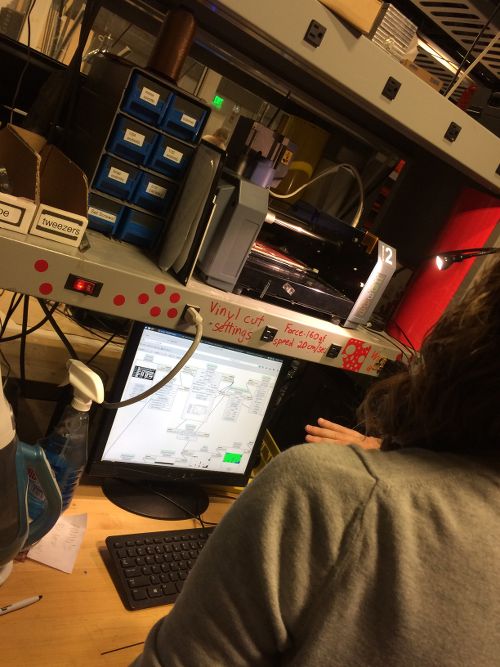
Making the PCB
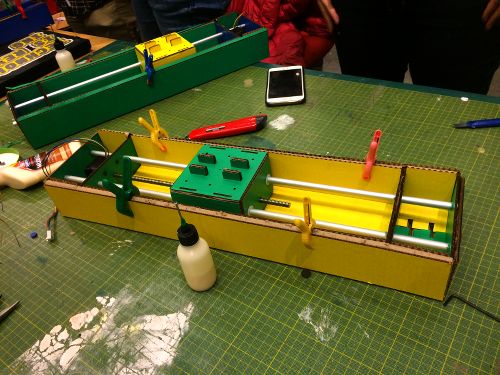
Gluing the cardboard stages
Next, we began testing the electronic components and making our own wires to use later. Meanwhile, I worked on assembling the four stages. We altered and cut off tabs on the cardboard stages, poked new holes, and fastened the stages together with washers, screws, and nuts. Eventually, we got all four stages assembled and attached securely (though a fire alarm forced us outside as firemen inspected the media lab.)

Testing the electronics

Me posing for a picture once everything was assembled
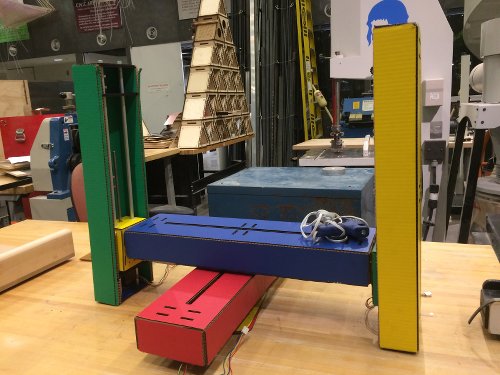
Assembled machine, ready for the electronics!

Waiting outside in the cold
I adapted the patch from IRCAM to read accelerometer data. In short, you "teach" the patch each gesture, and then it follows the data, trying to match the data with the gestures you record.

Gesture following patch adapted from gF patch from IRCAM
All in all, much more needs to be tweaked, so that it doesn't take 5 or 6 tries to get the patch to recognize the gesture. and how I can get it to read the serial data coming from the output. Ideally, I can set an if statement in MAX, that asks the program to pull a particular sound track when the values are within a certain range.
